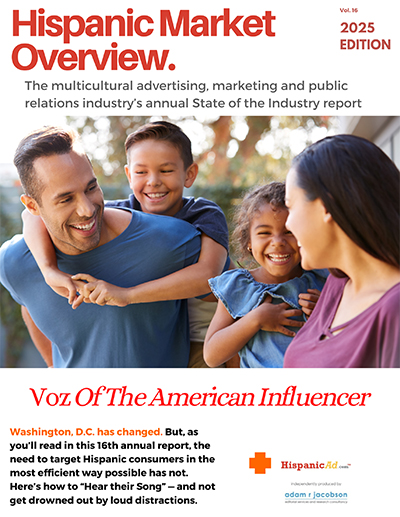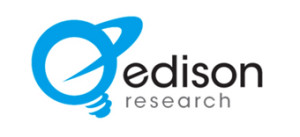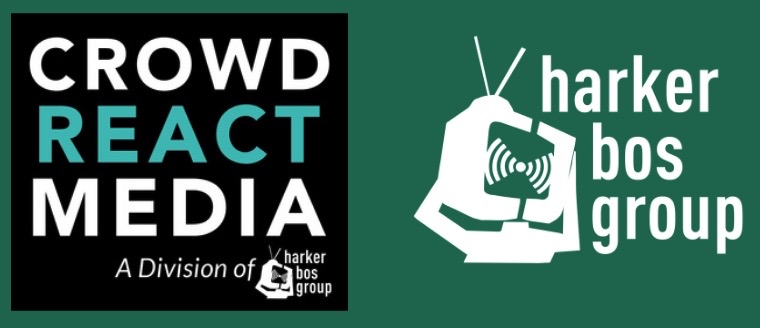Media Planning
Omnicom cuts 4,000 jobs, shut several agencies after IPG takeover including OMD Multicultural Division

According to industry sources, the merger Omnicom and Interpublic Group is complete. Mayor layoffs have occurred and the OMD Multicultural Division led by Mike Roca has been casualty.
2025 Hispanic Market Overview Report – DOWNLOAD for FREE

HispanicAd in association with Adam R Jacobson are proud to announce the availability of the 2025 Hispanic Market Overview – titled “VOZ of The American Influencer”
Most AM/FM Radio Listening Remains on Radio Receivers

The dramatic rise of digital audio platforms and technologies over the last decade has been chronicled by Edison Research’s Share of Ear® study. Listening to streamed audio content on phones, computers, smart speakers, and smart televisions now dominates the audio sphere. While AM/FM radio is available on all these digital devices, the radio receiver remains the dominant device the U.S. 13+ population uses to listen to AM/FM radio during an average day.
WHAT DRIVES CONSUMER CHOICE, AND HOW BRANDS SHOULD RESPOND – How humans decide. [REPORT]

Reaching a target audience in an attentive state (with the right content) is a widespread equation for effective brand communication. But should it be? Are reach and attention enough to influence people to buy, and continue buying, your brand?
Clarity in Chaos: How Culturally Inclusive Marketing Restores Growth Certainty

Marketers today have more tools and data than ever, but less certainty about how to utilize them effectively. The issue isn’t information—it’s insights and growth-focused actions. By Carlos Santiago, CEO, Santiago Solutions Group, Co-Founder, Cultural Inclusion Accelerator, and AIMM
Media ROI. [VIDEO]

Looking for fresh evidence on audio and radio advertising ROI? Look no further than one of the world’s largest media agencies. WPP Media and Radiocentre have released a major new analysis of the sales effect of AM/FM radio andi dgital audio.
RFP Best Practices when Selecting a Hispanic-Segment Agency

A practical guide for HR leaders and brand teams to design RFPs that surface culturally fluent, high-performing Hispanic agency partners.
AM/FM radio and podcasts are “Touchpoints” [VIDEO]

A major new study from Effie released this year at the prestigious Cannes Advertising Festival named AM/FM radio and podcasts as deserving of the “Super Touchpoints” effectiveness honor. Click below to watch a 15-minute video of Pierre Bouvard, Chief Insights Officer of the CumulusMedia
Migdalia Santana has passed.

While it’s been a while since we heard from Migdalia Santana, as many of you know she was always a strong advocate for Hispanic Media and one of the early pioneers in driving Hispanic Media Strategies.
The “general market” isn’t general anymore.

It’s Culturally Fueled™: complex, dynamic, and powered by people who’ve redefined what influence looks like. By Lisa Torres - Founder & Principal, The LIT Group Co.
Integration not scale is key to media success

Big multinationals can no longer rely on being big multinationals to secure advantage when it comes to media. Instead, they need to build in-house capabilities and connections says Tom Ashby, Global Lead, Media Services at WFA.
Cross-media ad strategies are evolving—Here’s what’s missing in your ROI equation

With consumers engaging with content across more channels than ever before, optimizing spend is critical to ensure you’re reaching your audience where they are. Yet a significant hurdle remains: the fragmented nature of media investments and the resulting measurement challenges. This fragmentation makes it harder to get a unified view of return on investment (ROI), leaving many advertisers struggling to understand the true impact of their campaigns.
Ban the Binary: Why Brand and Demand Must Be Built Together

Marketing is full of binaries. Traditional versus digital. TV versus TikTok. Art versus science. But none may be more counterproductive — or more deeply entrenched — than the false choice between brand and demand.
Auto ad spend shifts into high gear [REPORT]

This report is built from exclusive data shared by auto marketers, agencies, and media partners—highlighting how the industry is refining strategy and doubling down on performance-driven channels in the second half of the year.
Crowd React Media Releases Second Annual State of Spanish-Language Media 2025 [REPORT]

Now in its second year, the State of Spanish-Language Media report reveals how U.S. Hispanic audiences are engaging with media in 2025 and how they’re leading the way. Drawing from a nationally representative sample of Spanish-dominant and bilingual Hispanic adults, the study highlights how cultural identity, platform loyalty, and content preferences are shaping the media landscape across radio, TV, podcasts, streaming, and digital.
Need to Know: What is media fragmentation and how to reach today’s audiences?

Pause for a moment and think how you consume media in your typical day. You might start with listening to the radio or a podcast during your commute or check news alerts on a mobile app, scroll through social feeds, stream music while working, catch up on your favourite show on TV in the evening, and perhaps even glance at various billboards while driving on your way to home from work. Without even consciously realizing it, you likely engage with the media dozens of times throughout a single day. Multiply that by billions, and you begin to grasp the sheer, overwhelming diversity of how people engage with content.
TV Ads Rival Doctors in Driving Awareness of New Medications Across Key Demographics

More than half of Americans find new medications through CTV and linear ads, according to recent data in pharmaceutical advertising
The evolution of commerce media: Navigating a new era in advertising

Advertising is the industry that won’t sit still. Over the past three decades, the industry has morphed again and again. Brands once reached people primarily through mass media like TV, print, and radio, gaining precious few consumer insights. The internet changed all that with targeted and interactive campaigns online. More recently, retail media networks (RMNs) helped retailers enter the media business. Leveraging shopper and transaction data, RMNs help brands reach prospective customers through their websites, apps, and even off-site channels.
83% of U.S. adults use streaming services, far fewer subscribe to cable or satellite TV

Is streaming king? Most Americans (83%) say they watch streaming services, with Netflix and Amazon Prime Video being especially common. Far fewer – 36% – say they currently subscribe to cable or satellite TV at home, according to a new Pew Research Center survey.
¿Como se dice? bilingualism and how it has impacted advertising and the media

Many of us have been exposed to code-switching in the media from a very young age without realizing it. From cartoons teaching us basic survival Spanish on Nickelodeon to Netflix shows based on actual events, centering on a Colombian drug lord. There is an increasing number of cases in mainstream media that explore bilingual communication methods. Media is one of the building blocks of culture, and culture is a primary inspiration for advertising. Therefore, it is a natural progression for practices in the Hispanic marketing community to reflect the bilingual nature of the media. In this analysis, we will delve into the impact of code-switching on Hispanic audiences in both advertising and the media, as well as its influence on consumer behavior. By Piper G. Hadsell



























